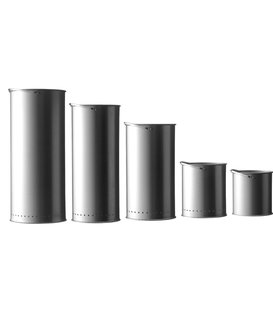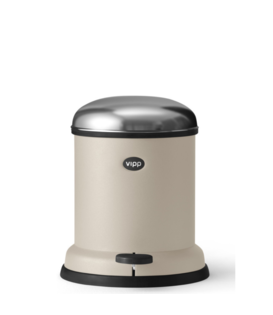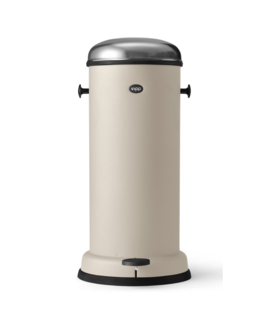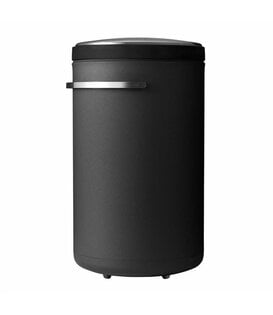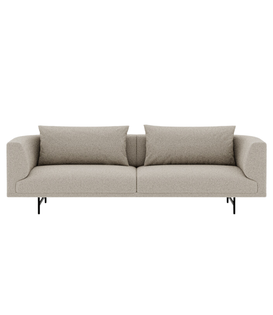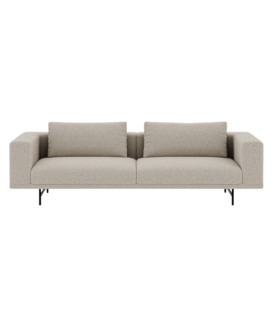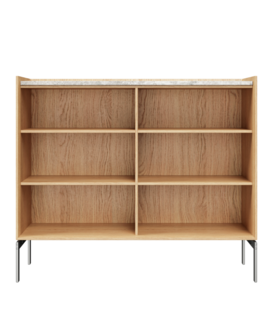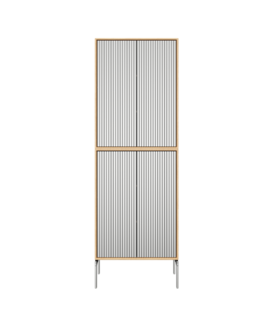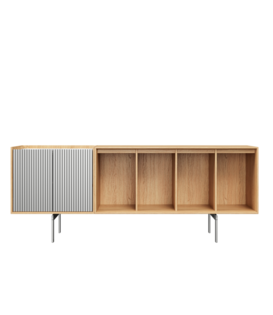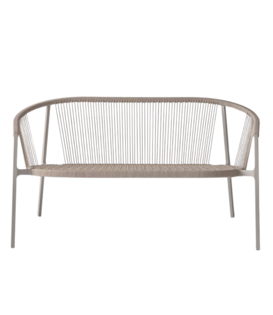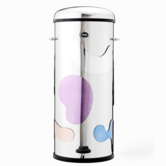
- Gratis verzending NL/B vanaf €100,-
- Nordic New bestaat 25 jaar
- Showroom 6 dagen p. week open van 10-17.00
- T 085 1303619 - info@nordicnew.com
Vipp - 17 Magnetic Bin 30 L.
Design by Alice Ronchi.
The iconic waste bin is now available with organic shapes that mimic the fluidity of seaweed through six unique magnetic shapes. They cover a large part of the Vipp box, which is made of polished steel.
An everyday object turns into an art object when it is edited by Italian artist Alice Ronchi.
The organic and colored shapes add a refined playfulness to the stoic seriousness of a design classic. 1mm thick and fitted with magnets lined with a soft felt backing for surface protection, the colorful shapes add an extra dimensional layer to the pendulum bin while the steel surface provides an illusory dimension of depth through the mirrored environment.
The iconic Vipp 17 pedal bin is equipped with a damper mechanism for smooth closing of the lid and a rubber ring that guarantees an airtight closure (no unpleasant odors). A rubber ring at the bottom ensures that the floor is protected.
Characteristics:
The warranty is 10 years.
Dimensions for the Vipp 17: height 72 cm. diameter 30 cm. Weight: 12 kg. Round waste bin. Equipped with handles, ventilation, soft-close and a black inner box. Indoor use. Suitable for kitchens, bathrooms and office spaces.
The original pedal bin (1939) by Holger Nielsen was not designed in the strict traditional sense, but took its shape during the design process: a large base for stability, a domed steel lid at the top that is easy to clean, handles on the side so it is easy to move, and a rubber ring at the base for floor protection.
About VIPP:
The Vipp success story begins on a spring Sunday in 1931 when 17-year-old Holger Nielsen wins a car in a lottery at the local football stadium. Holger loves cars, but does not have a driver's license, so he decides to sell the car and invest in a metal lathe. This marks the beginning of Holger's metal factory, where a few years later he creates a product that will become famous all over the world: the iconic Vipp pedal bin.
“Good design never goes out of fashion,” said Holger. Time has proven him right; the Vipp waste bin has only improved marginally since it was introduced in 1939. Today, the trash can is internationally recognized as a design classic and in November 2009 it was even included in the architecture and design collection of the Museum of Modern Art (MoMA) in New York.
Holger and his wife, Marie's youngest daughter, Jette Egelund, decide to take over the company. So far the waste bin has only been sold to the professional market, but Jette is confident that it can also be sold to design enthusiasts around the world. Jette visits the best furniture and design stores in Scandinavia. After much time and determination, The Conran Shop finally ordered the Vipp pedal bucket for their London and Paris stores.
Today, Vipp is a third-generation family business. Jette is now supported by her two children, Sofie and Kasper, who, together with a dedicated team of employees and a growing range of products, continue to add to the special Vipp story. The original waste bin is available in five sizes and is accompanied by new bathroom and kitchen products.
Article number: VIPP017
Weight: 1000










